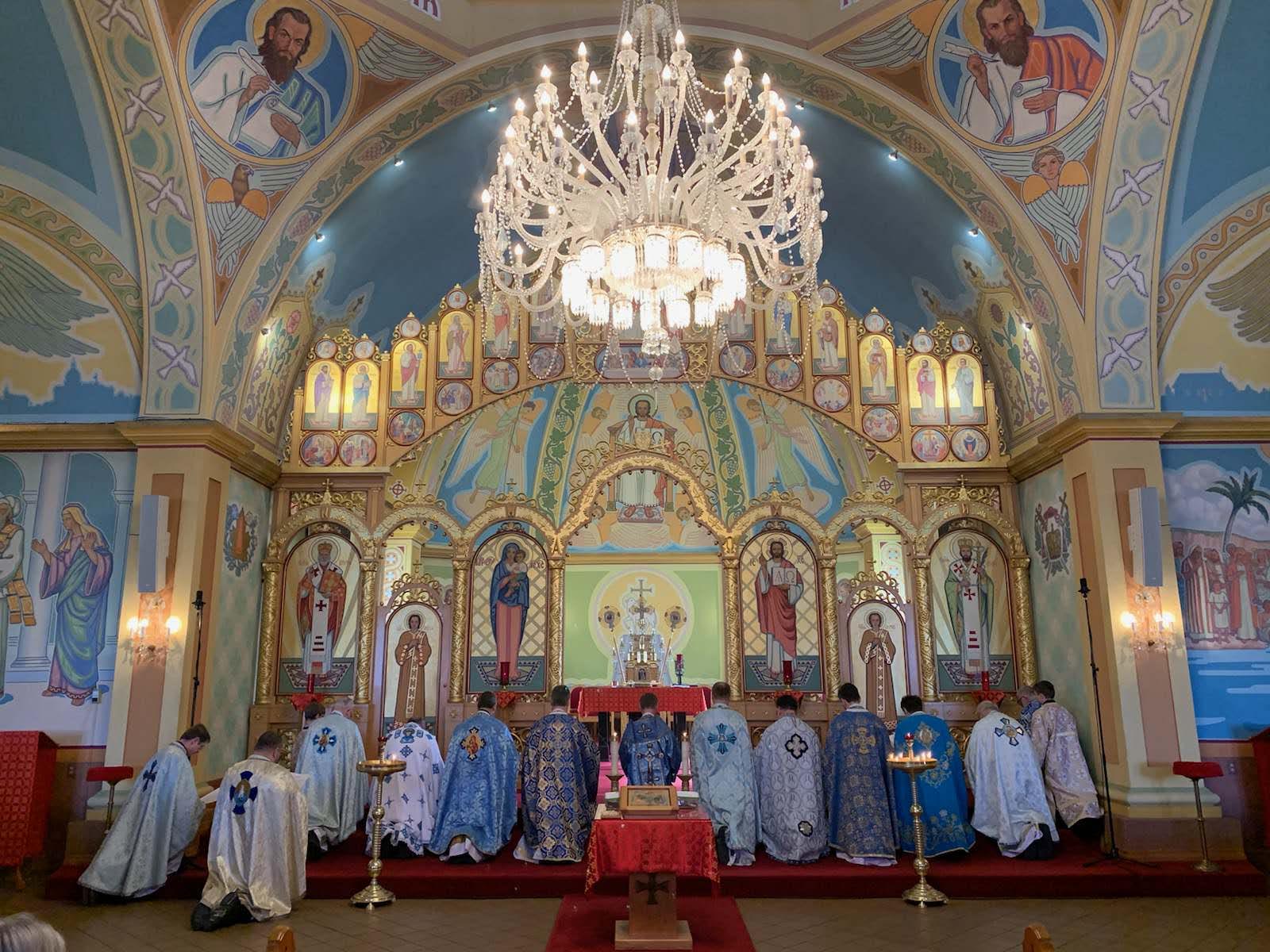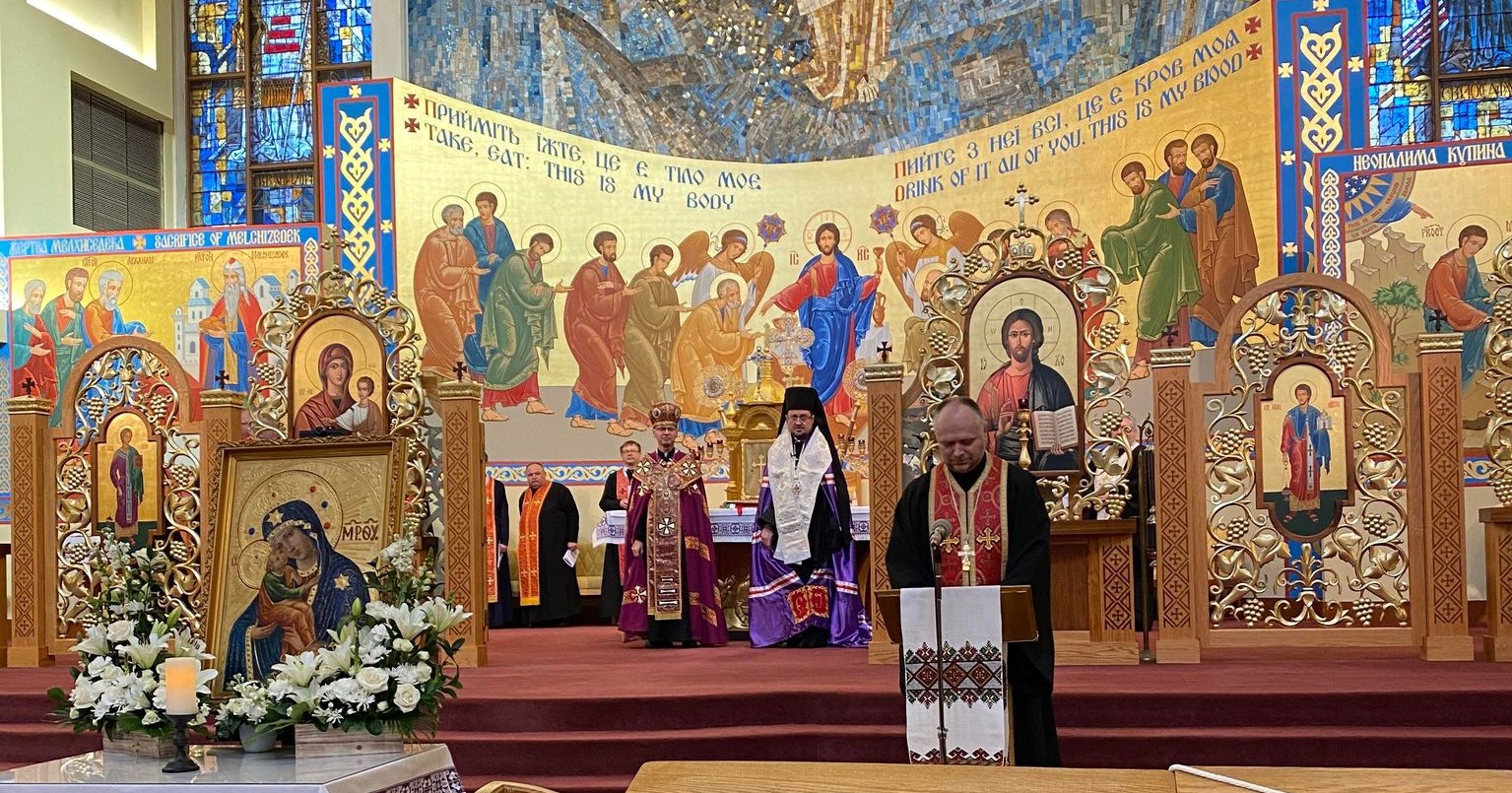In the Ukrainian Catholic Church, the veneration of icons (veneration of icons is the religious practice of showing deep respect, honour, and reverence towards sacred images or representations, through which believers establish a tangible connection with the divine, seeking spiritual guidance and expressing devotion) is intricately connected to the liturgical services. These sacred images play a vital role in bridging the gap between the heavenly and earthly realms, the invisible and visible, and God and people. The iconostasis, a wall-like structure adorned with icons, is where this encounter takes place, separating and uniting the sanctuary and nave.
The iconostasis serves as a visual representation of the heavenly, invisible, and divine world within the church building. It symbolizes the presence of God in heaven, represented by the sanctuary, and the visible world of our earthly existence, represented by the nave. It acts as a doorway, inviting believers to embark on a spiritual pilgrimage throughout their lives, directing them towards the invisible presence of God in heaven.

The Venerable Metropolitan Andrey Sheptytsky beautifully describes the significance of the iconostasis. He explains that the area behind the iconostasis, where the Holy Table is located and the Divine Liturgy is celebrated, represents heaven. On the other hand, the space where the congregation stands represents the Church on earth. The iconostasis, therefore, serves as the gateway to God’s eternal kingdom, encompassing everything that Jesus Christ offers to Christians through the Church and guiding them on the path to heaven.
The iconostasis consists of three doors: the Royal Doors in the center and the Deacons’ Doors on either side. These doors symbolize the connection between heaven and earth. They are opened during divine services to signify the presence of God and His angels. The bishop or presbyter and the deacon pass through these doors, symbolizing the exchange between heaven and earth.
The icons on the Royal Doors typically depict the Annunciation and the four evangelists. The icons on the side doors often depict archangels or deacons, emphasizing the link between the heavenly and earthly realms. These icons signify the proclamation of the Gospel and the role of Mary in opening the gates of paradise through her acceptance of divine motherhood.

To the right of the Royal Doors, there is an icon of Christ, often depicted as the Pantocrator (Almighty Ruler). To the left, there is an icon of the Mother of God, usually depicted as the Hodegetria or The One Who Shows the Way. These icons represent the plan of salvation, with Christ becoming human to make humanity partakers of His divinity through the acceptance of divine motherhood.
On the sides of the iconostasis, alongside the Deacons’ Doors, are additional icons. On the right side, there is the patronal icon of the church, honoring the person or event to which the church is dedicated. On the left side, it is common to find the icon of Saint Nicholas of Myra in Lycia, a beloved figure in the Ukrainian Catholic tradition.
The iconostasis typically includes multiple rows of icons. The first row, known as the stationary or foundational row, includes the Royal and Deacons’ Doors and the main icons. The second row, called the festal row, showcases icons depicting the twelve great feasts of the Lord and the Mother of God, serving as milestones in the history of salvation. Above the Royal Doors, the icon of the Mystical Supper is placed, reminding believers of their participation in the Eucharist.
The third row features the Deisis icon, representing the Church in prayer before Christ. The fourth row displays icons of the Old Testament prophets who prophesied the coming of the Messiah, emphasizing the unity of the two Testaments. The iconostasis is crowned by the Cross, representing the power and wisdom of God, reminding believers of Christ’s sacrifice and victory over sin and death.
In conclusion, the iconostasis holds immense significance in the Ukrainian Catholic Church. It goes beyond being a decorative element and serves as a sacred structure facilitating the encounter between God and His people. Through its icons, it narrates the story of salvation history, inviting believers to participate in the divine mysteries and experience the grace of God. The iconostasis stands as a tangible reminder of the Church’s calling to pray and intercede for the world while journeying towards the heavenly kingdom prepared for those who love God.

